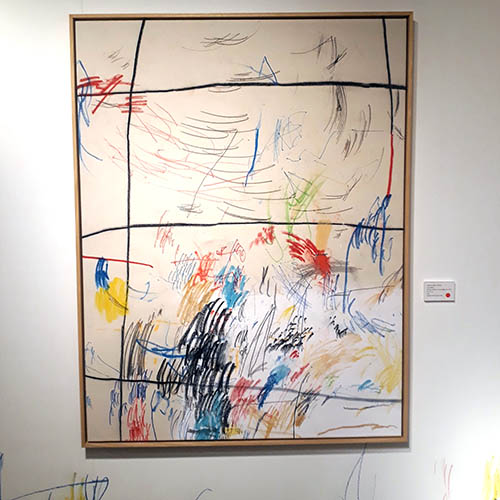Flowers and courtyards have been intertwined for centuries in Cordoba. By introducing an artistic perspective to the flower-courtyard tradition, FLORA has evolved this heritage into a unique world-class event.
Cordoba’s flower tradition dates back to its time as the capital of the Emirate of Cordoba in the 8th century, when the city started to grow into one of the largest and most prosperous cities in the Mediterranean Region. Under Arab rule, the prevalent courtyard house typology in Cordoba, a legacy from its Roman past, underwent a reinterpretation that incorporated "riads" –or flowerbeds– into the courtyards, along with wells and an irrigation system that maintained the space green and cool.
The courtyard retained its role as a place of contemplation in Cordoba’s stately homes until the late 19th century, when demographic pressure led to the transformation of these houses into multifamily residences. The courtyard became a communal space for unwinding and shared facilities. Following the floral tradition, residents adorned the courtyards with pots of local flowers for both aesthetic and aromatic purposes. The tradition prompted a popular contest of courtyards a century ago, now celebrated as the Cordoba Courtyard Festival –an annual event recognized as an 'Intangible Cultural Heritage of Humanity' by UNESCO since 2012.
FLORA, launched in 2017 as a private initiative, adopts the flower contest concept from the Courtyard Festival. However, instead of relying on conventional flower arrangements, it selects and invites the world's finest floral artists –and any artist interested in exploring nature– to create flower installations in the city’s most prominent courtyards. With the aim of involving the local community and addressing its collaborative interests, FLORA 2023 has organised nearly a hundred activities and side events. These include an “urban guerrilla” initiative to create floral installations using leftover festival materials, opportunities for artistic assistants to collaborate with floral artists, and public interactions with the artists.
The Festival has transformed Cordoba's cultural scene and has established the city as a global hub for floral artistry, impacting the economy of the province. According to Loyola University's report, “FLORA's 2022 budget generated 16.5 times more in tourist expenditure and 13 times more in dissemination and communication for every euro invested.” FLORA’s impact on me has been profound. I was familiar with flower arrangements but I don’t recall having ever seen flowers used as an art medium before FLORA’s inaugural edition. Now a festival regular, I continue to be mind blown by the installations.
This year’s FLORA edition centres around the theme of "Plant Intelligence,” exploring both the parallels with artificial intelligence and the remarkable problem-solving and adaptive capacities of plants in diverse environments. Artists, including Harriet Parry (UK), Tadao Cern (Lithuania), Flowgardenz (Russia), Hai Ihwa (South Korea) and Flowers by Bornay (Spain) have created extraordinary floral installations within the courtyards of palaces and institutions, including the historic Mosque-Cathedral dating back to the 8th century.
 |
| Left "tree bark" detail of Harriet Parry's Heartwood (2023) | Right: white flowers absorbing black ink at Tadao Cern's Black Bloom/White Echo (2023) |
Harriet Parry's Heartwood is a beautiful raised surface of red carnations, chrysanthemums, lilies and other flowers concentrically arranged in circles to mimic the cross section of a tree trunk (see cover picture). The installation is located in the Mosque-Cathedral courtyard surrounded by orange trees and a soundscape featuring bells and fountains. “Heartwood reminds us how trees build their own support over time, a true lesson in intelligence”, says Parry. It tells the story of the tree, just as the Mosque-Cathedral tells the story of Cordoba, and celebrates connectivity with the orange trees that surround it.
 |
| Tadao Cern, Black Bloom/White Echo (2023) | Archaeological Museum Cordoba |
Winner of FLORA 2023, installation artist Tadao Cern ventures into the world of flowers for the first time with Black Bloom / White Echo. His installation repurposes several structures from previous festivals and clads them with 16,000 locally-grown white carnations and chrysanthemums over a courtyard pool at the archaeological museum. The pool is dyed black, and as the white flowers absorb the colour from the water, their hue gradually shifts toward black. By showing how flowers adapt and change to absorb the environment, Cern beautifully reflects on the blending of different cultures and religions that has enriched Cordoba throughout history.
 |
| Flowergardenz, Cell (2023) | Orive Palace Cordoba. Photo by Festival FLORA |
 |
| Flowers by Bornay, Mobilis in Mobili (2023) | Diputación de Cordoba |
 |
| Hai Ihwa, Artificial Defense Mechanism (2023) | Viana Palace Cordoba |
Artificial Defense Mechanism, the installation by Hai Ihwa at the Viana Palace, explores the impact of artificial intelligence on the natural defense mechanisms of plants. Using flowers and greens such as asparagus ferns, carnations, eucalyptus and kale, and deliberately arranging them in an extremely artificial manner that excludes the roughness and flexibility of nature, Ihwa wants to raise awareness of technology's impact on the natural world.
 |
| FLORA Street Poster |
ABOUT
FLORA International Flower Festival | 16-26 October 2023 | Cordoba, Spain
FEATURED ARTISTS
PHOTOS
by PS unless stated otherwise. Cover picture Heartwood (2023) by Harriet Parry | The Orange Tree Courtyard, Mosque-Cathedral Cordoba. Photo credit Manuel Murillo for Diario de Cordoba.



























